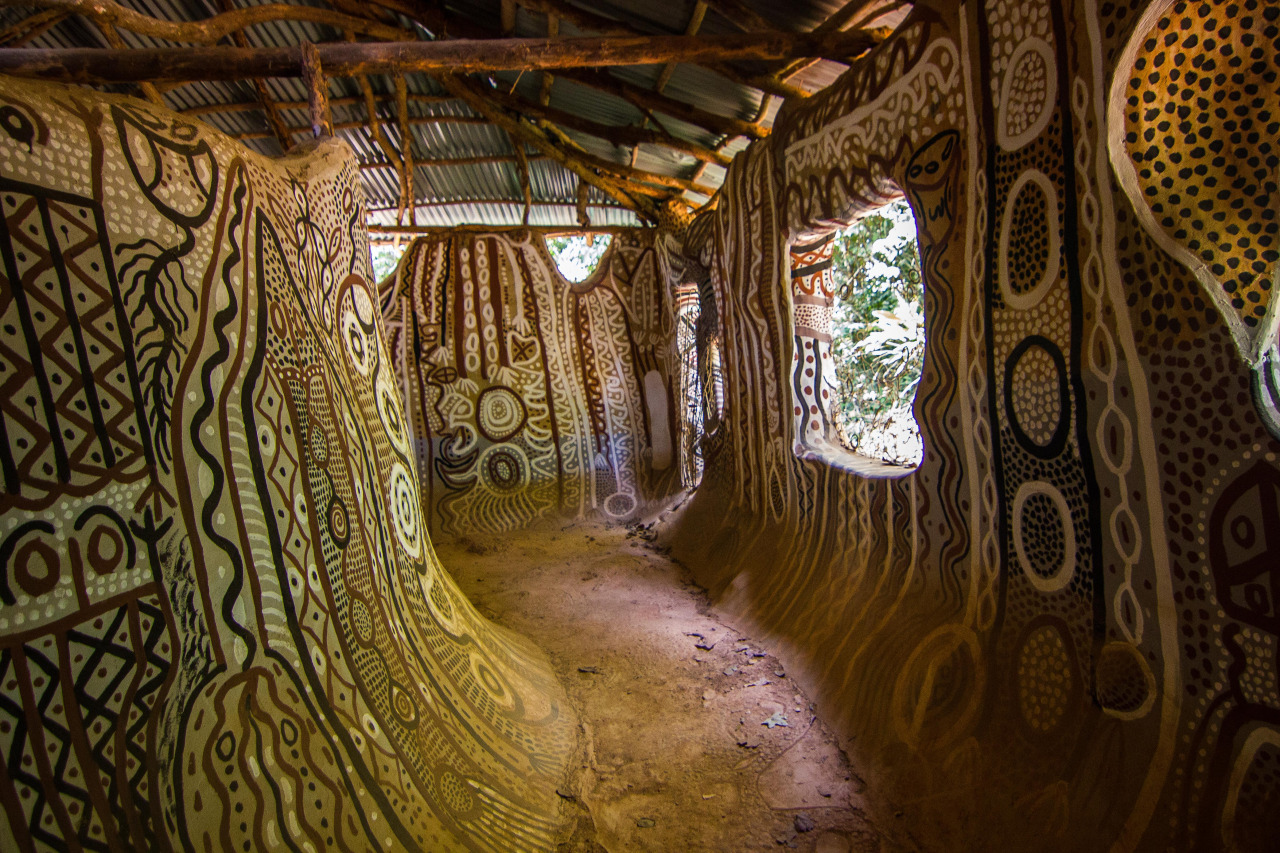
Deep in the heart of Africa lies the Osun-Osogbo Sacred Grove, a forest along the banks of the Osun river in Yoruba land of Nigeria. It is a gigantic art exhibition sustained by spiritual culture, the last of hundreds of sacred forests which used to adjoin the edges of most Yoruba cities before recent urbanization. The whole grove is a temple for the ancestral-based Olorisha religion and consists of thousands of small shrines, sculptures and ornaments of gods, goddesses in theirs joyful union. This Sacred Grove is regarded as the abode of the goddess Osun, the personification of the waters of life and the spiritual mother of the Osogbo township. It is said that the goddess would give prosperity and protection to her people if they built a shrine to her and respected the spirits of the forest.
The grove is an active religious site where daily, weekly and monthly worship takes place. An annual processional festival to re-establish the mystic bonds between the goddess and the people occurs every year over twelve days in July and August and thus sustains the living cultural traditions of the Yoruba people. The grove is also a natural herbal pharmacy containing over 400 species of plants of which more than 200 are known for their medicinal uses.


The Osun-Osogbo Sacred Grove has five main divisions associated with different gods and cults, each one with beautiful and stunning hand-crafted shrines. The grove has a mature, reasonably undisturbed, forest canopy, which supports a rich and diverse flora and fauna, including the endangered white-throated monkey. The Osun River meanders through the whole grove and along its length are nine worship points. Throughout the grove the broad river is overhung with forest trees. Its waters signify a relationship between nature, the spirits and human beings, reflecting the place given to water in the Yoruba cosmology as symbolizing life. The river is believed to have healing, protective and fertility powers. The fish are said to have been used by the goddess Osun as messengers of peace, blessings and favor.

The Yoruba people in the grove are beautiful with dark black-blue skin. They are proud and very aware of their special heritage. While I was there, I meet both the caretaker priest and a priestess. The old caretaker behaved like a saint, dignified, mindful and respectful. His attitude, kindness and serene peacefulness made me want to stay longer, learn the language and understand their insights. I wonder if that was how the Austrian artist Susanne Wenger also felt when she in 1950 came to the Osun river. Due to tuberculosis, she turned to Yoruba to be cured. Having recovered, she became so attracted to the religion after meeting one of the few remaining priests.
Slowly Susanne Wenger established herself as an active preserver in the revival of the Yoruba religion. She also founded of the archaic-modern art school, New Sacred Art. In her own words, “Orisa, a spirit or deity is merely a name which represents the supernatural forces which are basic expressions of life. It doesn’t matter what you call it. It is a sacred force that represents the experience of life that informs human beingness.”
Susanne Wenger died in 2009 at the age of 94 in Nigeria after an amazing life as priestess and artist, and as a natural gathering point for many local artists. Together they restored the whole sacred grove with all the thousand outdoor sculptures and shrines. In all my travels I have never seen such scale of living art. She dedicated her life to being the guardian of the Osun goddess as well as a Yoruba high-priestess for 50 years. What a woman!
In recognition of its global significance and its cultural value, the Sacred Grove was inscribed as a UNESCO World Heritage Site in 2005. It is an honor to recommend this ancient, deep and magical grove in the Yoruba land of Africa.
Further reading: Osun Osogbo: Sacred Places and Sacred People.
The Holy Odu: A Collection of verses from the 256 Ifa Odu with Commentary.
The Architects of Existence: Aje in Yoruba Cosmology, Ontology, and Orature.
Photos by SNAP IT OGA.
